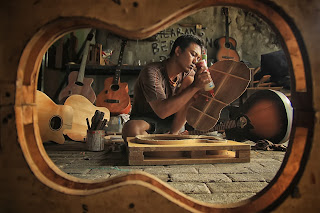If I were to rank my skills in fiber arts, I think crochet and sewing are my “best things.” However, macramé has long fascinated me, and I’ve created a few things over the years. In working with the cones, mosses, flowers, sticks and boughs of our timberland, macramé has reintroduced itself, a long-neglected cousin in the fiber art world.
Macramé is the art of knot-tying and is believed to have originated in the 13thcentury with Arabian weavers who used it to make decorative fringes on rugs and other woven items. Sailors adopted it, and it was quite popular with the Victorians. More recently it has been associated with the bohemian style of décor which has seen something of an upswing since the “hippie” era of the 60’s and 70’s.
There are two basic knots in macramé, the Half Knot and the Half Hitch. Variations on these two lend themselves to a wide variety of designs. Beads, shells, rocks and other items are often woven into the pattern.
How do we incorporate macramé into crafts made from forest products?
 |
| Photo by Patrick Perkins on Unsplash |
We have been cutting thin slices of alder logs and branches and would add an alder-round platform to the hanger.
 Wall hangings of macramé can be quite stunning. Looping the cords over a dowel or straight stick, then knotting the cords to create a pattern is a simple way of creating a dramatic wall hanging. A finished store-bought stick is fine but foraging for one in nature adds an element of the wild and creates a more rustic bit of décor. A quick look on Etsy indicates the macramé owls of the 70’s are back (or never left). They often have two sticks, top and bottom, with the owl fashioned of knots between.
Wall hangings of macramé can be quite stunning. Looping the cords over a dowel or straight stick, then knotting the cords to create a pattern is a simple way of creating a dramatic wall hanging. A finished store-bought stick is fine but foraging for one in nature adds an element of the wild and creates a more rustic bit of décor. A quick look on Etsy indicates the macramé owls of the 70’s are back (or never left). They often have two sticks, top and bottom, with the owl fashioned of knots between.
Possibilities are endless! How many ways can knotting be used in conjunction with sticks and twigs, cones, plants, and various other forest foraged objects?
Let your imagination go wild!!
Margaret






















